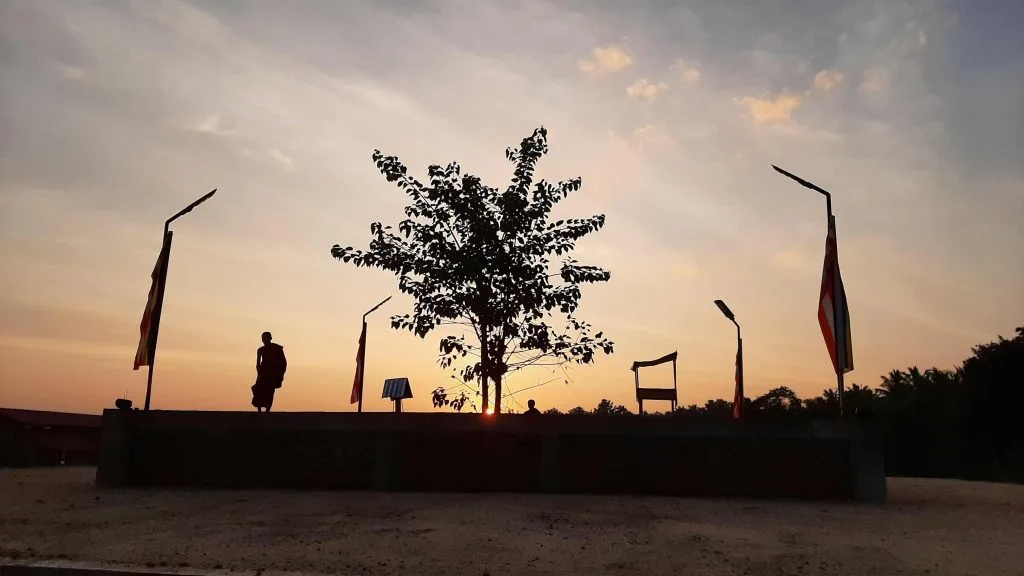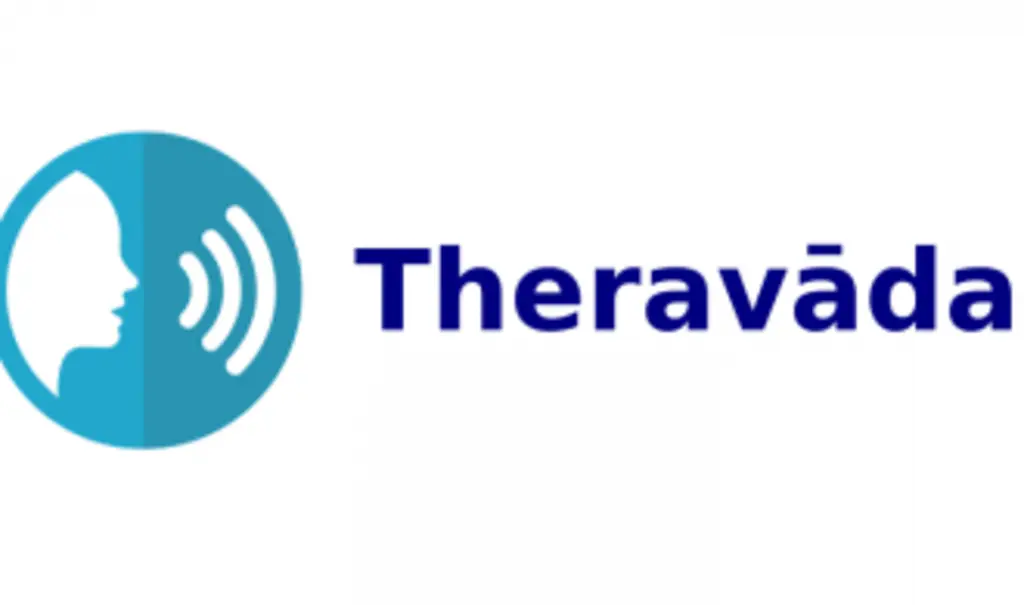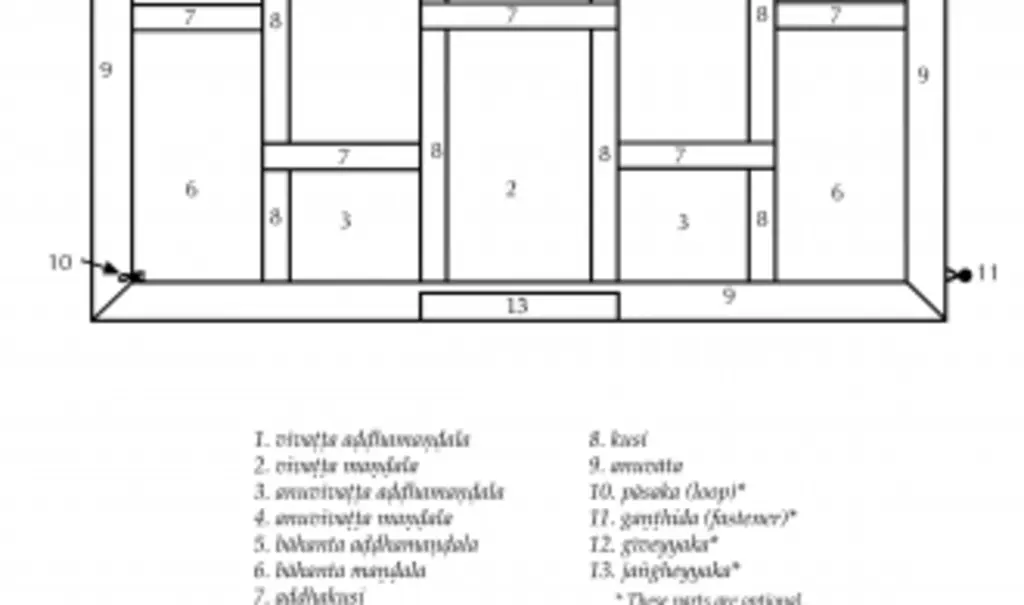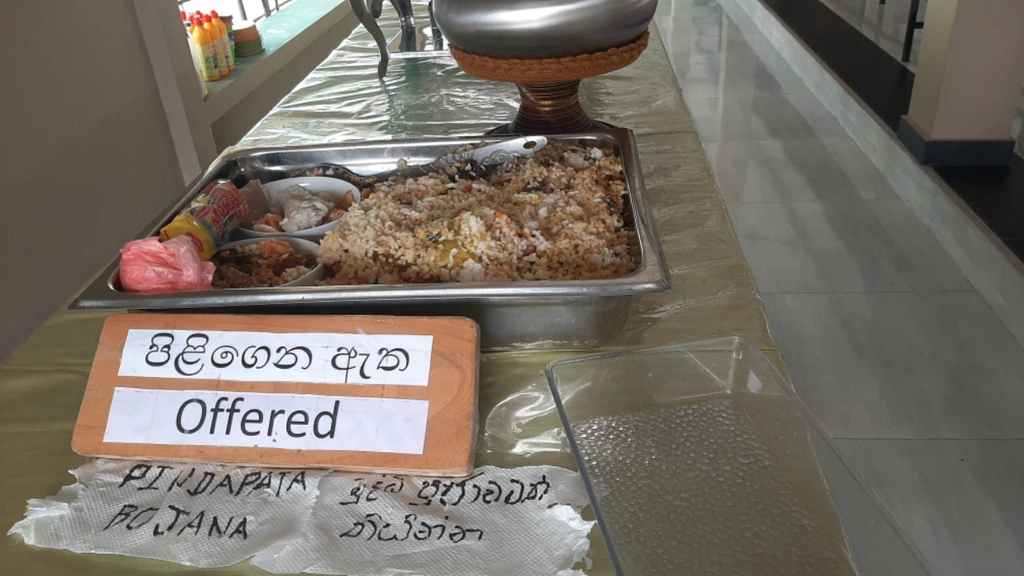What is Theravada Buddhism?

Monk at The Bodhi Tree located at International Institute of Theravāda
Theravada (Theravāda) is one of the major branches of Buddhism and is often referred to as the “School of the Elders.” It is the oldest surviving Buddhist school and it is the predominant religion of Sri Lanka, Myanmar, Thailand, Laos, and Cambodia. Because of its age and orthodoxy, it can also be loosely translated as “Old School Buddhism” in some ways too. The Theravāda tradition emphasizes the study of the complete 3 baskets (tipiṭaka) of the Pāḷi Canon along with the ancient commentaries for those texts.
The Three Baskets
The three baskets are listed below:
- Vinaya Piṭaka: (Basket of The Monastic Code),
- Sutta Piṭaka: (Basket of the Dhamma Discourses)
- Abhidhamma Piṭaka: (Basket of the Higher Dhammas - of mind, matter, mental components, the causes and the Uncaused (Nibbāna) )
The Vinaya Piṭaka is “mostly” associated with the rules, but it is also rich with the some historical facts including information on the Buddha’s enlightenment process and the formation of the saṅgha. They are called baskets (piṭaka) because the “books” or collection of bound inscribed palm leaves were metaphorically carried in large baskets. The original teachings were passed down orally for 500 years (without baskets), until it was finally written down in Sri Lanka during the first century BCE.
Pronunciation:
Theravada is actually spelled Theravāda. The “Th” is pronounced with a hard “T” as in “toothbrush” or “top”, with an extra puff of air added to the “T”. This is phonically called an “aspirated-t”. The first and third syllables are sustained longer than the middle syllable. The Latin vowels are used in all Roman Pāḷi letters. Therefore the first vowel sounds like a long-a as in “hay’” while the second and third vowels are pronounced with an “ah” sound. The first and third vowels are held longer than the others. You can see this link here for a recording.

How To Pronounce Theravada
How to Pronounce Theravāda Have you ever wondered if you were pronouncing Theravāda correctly? Read this article to find out how to properly pronounce Theravāda. Most of the resources out on the web mispronounce the word Theravāda, and Google has failed me when I did a search too. However, it was a good excuse to write this small article. The “Th” sound in Theravāda is not the English “Th” like “Them” or “Think.” It is a “T” sound with a puff of air. It is phonetically called an “Aspirated-T”. Sometimes the word that is given as an example is “Tough.” If […]
What Are Hinayana And Mahayana Buddhism?
Hinayana means hīna (inferior, weak, lesser)+ yāna (vehicle). It is commonly translated as “The Lesser Vehicle” and it is a term created by Mahayana Buddhism to describe the other competing group while naming themselves as the “Greater Vehicle”. Mahayana is formed from Mahā (great) and Yāna (vehicle) and commonly known as “The Greater Vehicle” by name. Today, Hīnayana often refers to Theravāda as seen in today’s time, but some say it actually referenced a group that no longer exists, but was similar or related to Theravāda that survives until this very day. The term “Hinayana” is considered derogatory by many practitioners of Theravada Buddhism, as it literally implies that the Theravāda tradition is inferior to the Mahāyāna tradition.
In general, Theravāda promotes the enlightenment process, while Mahayana promotes the Bodhisattva vow which commits people for uncountable eons until they too reach Buddhahood themselves for the sake of saving many beings from suffering related to the seemingly endless rebirth cycle of saṃsāra. Tibetan Buddhism (Vajrayana) is considered to be an extension of Mahayana Buddhism. Nevertheless, Theravāda still has a bodhisatta path available for those who wish to follow that path. The two descriptions are quite different with the Theravāda version being a little more realistic as to what is required to become a Buddha.

The Robes of Theravadan, Mahayanan, Tibetan Monks
It occured to me that people don’t know one type of Buddhist monk from the other and a post was needed to explain this. First a little bit of history. Theravada is the closest thing as one can get to the original form of Buddhism and is based on the Pali texts. The countries that have Theravada as their national religion are; Myanmar, Thailand, Laos, Sri Lanka, and Cambodia. It dates back to the Buddha from 5th century BCE Later, came Mahayana – Chinese Buddhism of the 1st century BCE. The texts are based on Chinese and Sanskrit. It is […]
Pāḷi Language
In general, one can recognize pure Theravāda teachings by the usage of the Pāḷi terms within the text, talks or content the teachers or students quote or create. Those who use Sanskrit might be mixing various sources. Sanskrit has an assimilation of the 3 s ś ṣ sounds to s; and assimilation of r and v to stronger letters like m & b. In simple terms, you will easily recognize Pāḷi with the lack of “r’s”, “v’s” and “sh’s” in the more commonly known Sanskrit words. Three very common examples are:
**-—Pāḷi——————–Sanskrit—–
**Dhamma——————Dharma
Nibbāna——————-Nirvana
Bodhisatta—————-Bodhisattva

Buddhist Monks’ Robes Information
Few people realize that the Theravāda monk’s robes are actually a piece of rectangular cloth with no sleeves.
Orthodox School Benefits

The Asoka pillar. The 24 spoked wheel below represents the 24 Paṭṭhāna of Abhidhamma and is a common Theravāda symbol. Photo Credit given at bottom of post
As an Orthodox School of Buddhism, one is able to find monks who still stay true to the rules originally laid down by the Buddha. Although it is difficult to find monks who do not use money and also follow this rule strictly as defined by the commentaries, one still can find thousands of monks who strictly follow these rules today. Furthermore, the style of dress and various practices, such as going for alms and deep meditation techniques are still easily found today throughout the Theravāda countries and the texts.

About Piṇḍapāta: Why Do Monks Go For Alms in a Village?
Why would a monk collect food from a very poor village during an economic crisis when the monastery is mostly supported by wealthy people?
Early Buddhist Texts (EBT)
Early Buddhist Texts (EBT) is a practice of giving an importance on non-Pāli texts that are also considered “Early”. Nevertheless, much of this can be found in Sanskrit or Chinese translated originally from Sanskrit by other heretical sects. This makes these texts categorically “later texts.” Although EBT might have many points in common with Theravāda, it is a different field of study and not considered to belong to traditional Theravāda. Those who follow the EBT way usually do not consider themselves to be fully inline or committed to Theravāda and they often do not accept the Abhidhamma or Commentaries. These groups often focus on the differences of the early Buddhist texts more than the similarities and they seem to try to come up with new theories of why these texts are different rather than simply focusing on the Theravāda Pāḷi texts. Although the name is “Early Buddhist Texts”, we could call this a “Modern” Buddhism instead. Some EBT followers pick and choose what they want decide is correct or not. Those who call themselves “bhikkhunis” are a great example of making up new convenient interpretations of heavy Saṅghadisesa offenses using various nonPāḷi EBT renderings. This modern form of EBT Buddhism is very popular in the Western Buddhist Circles, but it is actually fringe Buddhism when looking at the greater population of Theravāda.1 Ironically, such monks usually hold Theravāda ordinations as mentioned by the commentaries but often reject such labels. EBT might have the appearance similar to Theravāda on the outer layer, but it is not Theravāda.
Katthāvatthu
In contrast to EBT, the Katthāvatthu is considered to be a very important book for defining Orthodox Theravāda Buddhism still followed by the vast majority of monks found in South East Asia today. The book and commentary are found in the Abhidhamma Piṭaka. It is often translated as “Points of Controversy” as it covers over 200 points of controversy throughout its content. Much of the controversial or heretical points can also be directly or indirectly tied to the original source texts found within the EBT sources.

Are Buddhist Monks Allowed To Use Money?
Are Buddhist monks allowed to use money? The short answer is that monks are definitely not allowed to even touch money for all traditions.
Conclusion
Theravāda is considered one of the three major schools of Buddhism; Theravāda, Mahayana, Vajrayana. Theravāda relies on heavily or exclusively on the Pāḷi Tipiṭaka and its commentaries. Theravāda also includes the Abhidhamma as the third basket which also includes the Kathāvatthu or Points of Controversy. It is the oldest surviving school of Buddhism found today along with some ancient practices of; following the rules laid down by the Buddha, going for alms, original robes, Pāli language recitations, and the ancient techniques of meditation. Many such Theravāda topics can be found within this website. Go to the home page and look around.
Photo credit of Asoka Pilllar:
There might be 300,000 monks in Myanmar alone, but only maybe 150 Westerners in the world today. ↩︎
Click below to search subjects